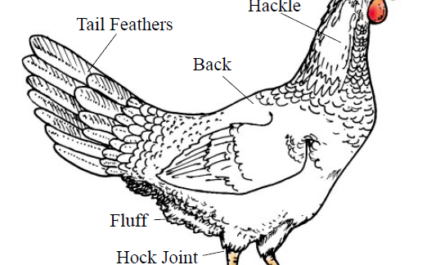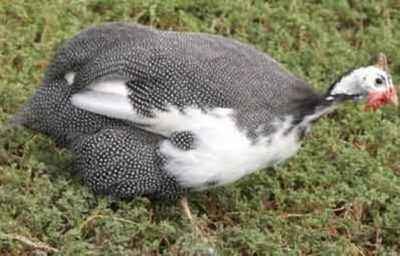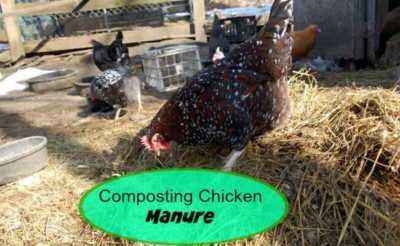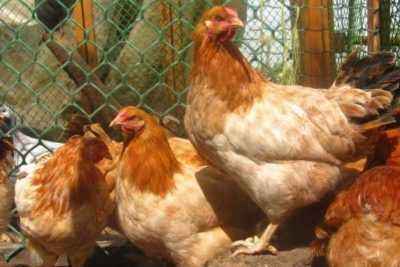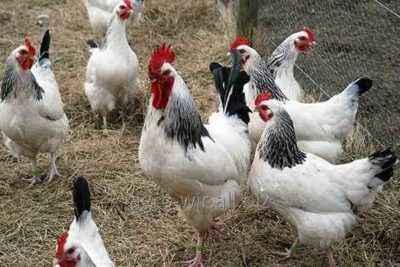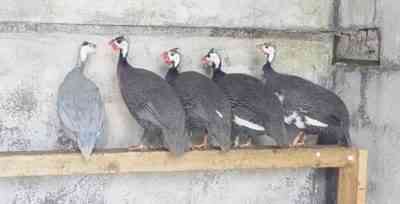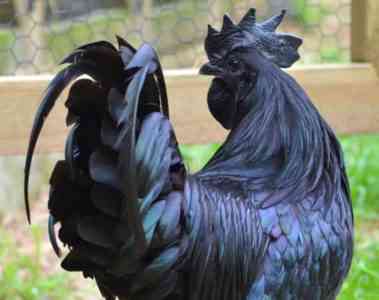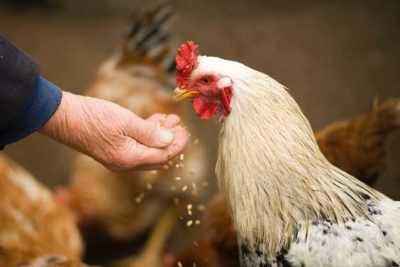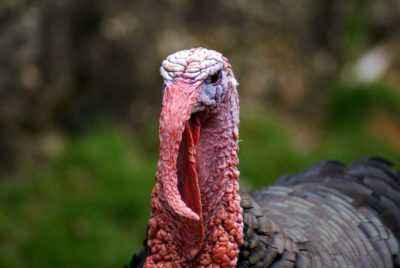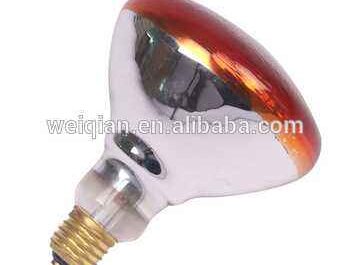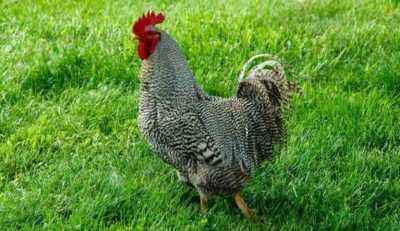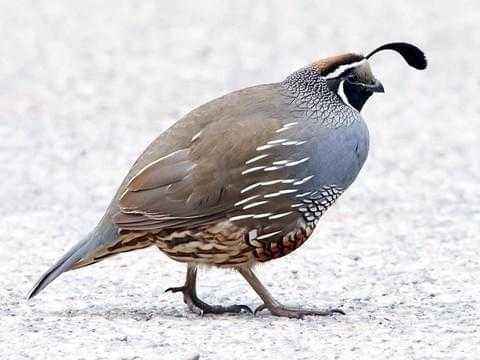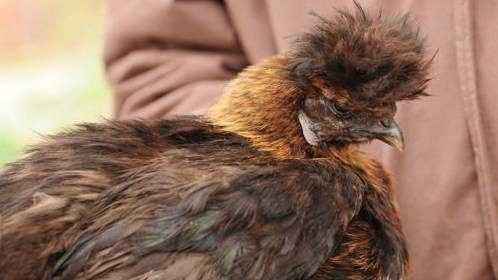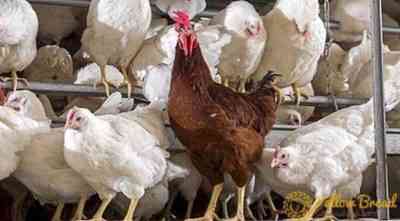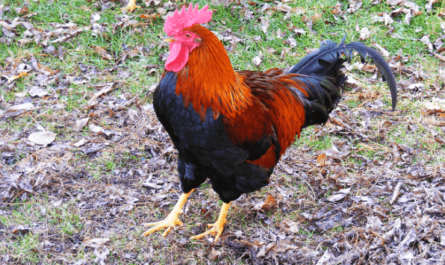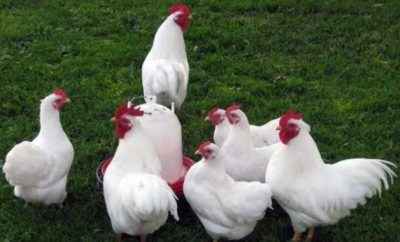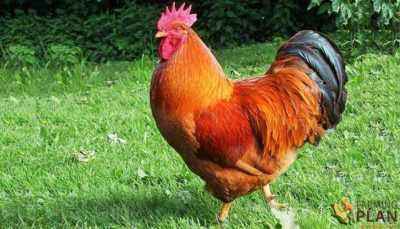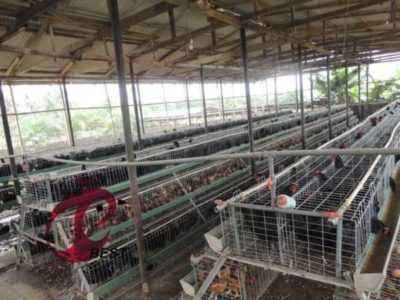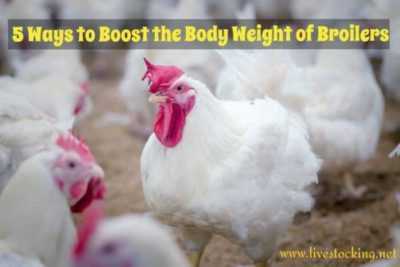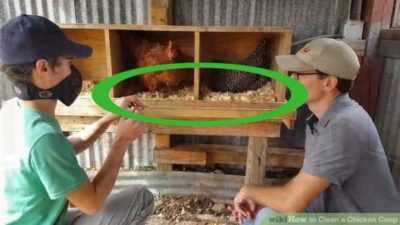When breeding poultry, each breeder tries to create the most favorable conditions in order to ensure high productive indicators. Equally important in comfort is the roost for chickens, which many make with their own hands from improvised materials.
- Role of the chicken rooster
- Basic design requirements
- Location and placement rules
- Varieties of chicken roosts
- Multi-tiered
- Single-tiered
- Portable <
- Corner
- Technology
- Tools and Materials
- Assembly and Installation Procedure
- Summarizing

Rooster for chickens with their own hands
Role of chicken roost
In the condition In the natural environment, the bird prefers to sit not on the ground, but on branches, fencing and other elevations.
When kept in a chicken coop, they will organize a special rooster, which is located at some distance from the floor.
Domestic chickens in a sitting place not only rest during the day, but also sleep at night.
Another goal of this design is to prevent contact with the surface, where a large number of pathogens of fungal and viral diseases gather. Thus, the perch performs a preventive role, protecting the layers from disease.
Basic design requirements
The main requirement is sufficient height and spaciousness of the structure so that the chickens do not feel crush.Therefore, the physiology of the livestock and its quantity are taken into account.
Another rule for arranging poles is strength and stability. They must be able to support the weight when sitting and moving.
The bar where the chickens will sit and rest should be comfortable to grip and should be kept even in the sleep stage.
Furniture shelves are not suitable for making, flat wooden boards and thick logs – it will be uncomfortable on them.
Suitable materials:
- a wooden beam without knots and a splinter of free girth, namely 1/2 of the length of an open chicken paws, depending on the breed;
- the appearance of the bars – rounded, without right angles;
- the surface is smooth, sanded with sandpaper paper that is not capable of causing mechanical injuries.
The optimal size of a wooden blank is with a cross section of 4 * 6 cm or 5 * 5 cm.
When when calculating the length and number of poles, take into account:
- from 0.2 to 0.35 m for each layer of meat and egg and meat direction, respectively, with an interval between the slats of 0.3 m;
- from 0.15 m per chicken with an interval of 0.2 m.
With these dimensions in mind, one 2.4 m pole accommodates about 17-18 birds.
If the space in the chicken coop allows, it is better to perch with a margin, in order to avoid skipping Nia weak chickens stronger. Often they are made removable to make it easier to change.
Location and placement rules
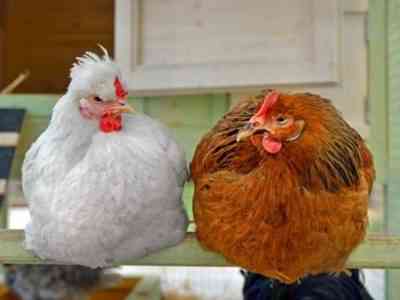
The perch should be located in the warmest place
The most suitable place for the perch is the warmest remote site near the far wall, away from extraneous noise, window openings and doors.
Ready structures are placed at the same distance, single-tier – at the same level. The distance you need to retreat is from 0.25 m so that the bird does not touch the wall surface with its tail.
Do not equip the poles near the entrance to the room, because drafts are possible here.
To save space, some houses combine two ideas in one: equip a sitting place and a nest for laying eggs.
For this purpose, they place their roost where equipped nest with an egg collector for chicken eggs, fixing the crossbars at a height of about 0.3 m.
Important condition: regular frequent cleaning, as both the nest and the shell will be contaminated with litter.
Varieties of chicken roosts
There are several types of chicken roosts. Each of them has its advantages and disadvantages. Choose the appropriate option, taking into account the dimensions of the chicken coop, the layout of the internal space, the size of the livestock and farmed breeds.
Layered
Provides equipment for seats at several levels in the form of a staircase. The gap between the tiers is from 0.5 m. This distance is enough for the hens to freely move around the poles.
Such original models are usually made of wooden beams and are often placed as triangles or separate cells in a corner in a triangular shape or place them parallel to the wall panel.
They take up little space and save space in a small chicken coop.
It is better to build folding structures – this will simplify cleaning and maintenance.
Multilevel perches have a couple of disadvantages:
- ots lack of hygiene – litter from birds located on top often falls to the lower level, dirtying those that are sitting below;
- bird quarrels – in trying to climb as high as possible, chickens often come into conflict.
Single-tier
Single-tier perch is a simple device that is mounted at a distance of 0.35 to 0.5 m from the wall panel and at a level of 0.6 to 1.0 m from the surface of the floor or the ground.
The sizes of the intervals depend on the breed of the hens. The drawings are maximally adapted to the parameters of the bird.
The main task when arranging a single-tier sitting place is to firmly fix the bar from the timber so that it does not rotate.
The advantage of the usual design is its hygiene becausethere are no other poles under the main beam, and the entire litter accumulates on the litter placed under the perch. However, it is suitable only for a small livestock.
Do not lay one bar from wall to wall, because under the weight of the birds, it will bend and as a result will break. The optimal length is up to 3 m. For the stability of the structure, supports are installed.
Instead of the litter, many houses prefer to use special pallets and trays, which further simplifies the care and cleaning.
Portable
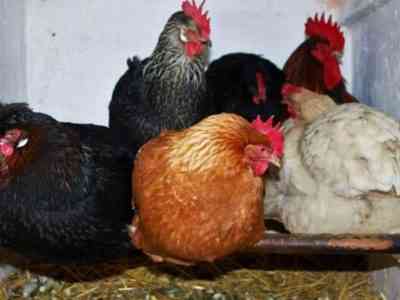
The portable pole is easier to care for
Portable pole – a mobile device that is not fixed on a permanent basis, but is installed with the expectation of moving it at any time.
Unlike a stationary one, a removable seat It is easier to maintain and disinfect, taking it out of the premises.
Among the shortcomings:
- small capacity;
- more complicated assembly takes a lot of time to make parts.
A portable sitting place is a good alternative to placing poultry in a temporary room, for example, in the summer season in an insulated chicken coop.
Corner
Perch perform both single-tiered and multi-tiered. This method of placement is suitable for keeping a small population of up to 20 individuals.
In the corner structure, the bars are taken aback between adjacent wall panels. The advantage is the simplicity of manufacture.
Also, for this purpose, any far corner will be suitable in a secluded place where the birds would be calm.
Among the minuses is the inaccessibility to cleaning multi-tier options, because it is preferable make removable.
Technology
To make roosts for chickens with your own hands, you must follow the instructions:
- calculate the size of the chicken coop;
- define the space, taking into account the location of the entrance doors, window openings, a walk-in door, an internal arrangement twa – nests, drinking bowls, feeders, bathing boxes with ash and sand;
- select the appropriate option;
- mark everything on the drawing to check if the selected place is on the way to the feed , drinking, whether it will not be located on the air flow path, the optimal distance between all zones is 0.5 m.
Instrumentation and materials
As a basis, you need bars of wood of length calculated by breed and number of livestock.
Tools:
- carpentry hammer;
- sandpaper;
- ruban to, if any;
- a hacksaw;
- screwdriver;
- nails for attaching to the wooden walls of the chicken coop, self-tapping screws with dowels and other fixing material for mounting to brickwork .
When building, it is better to take deciduous wood of high density, able to withstand the weight of birds, such as birch.
When using coniferous bars, the preforms are pre-fired with a blowtorch, to stop the selection from the resin tree.
Assembly and installation procedure
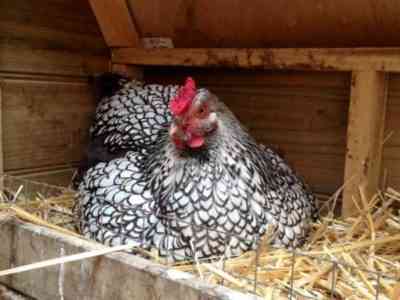
Perch is a mandatory attribute of the chicken coop
Assembly is carried out in several stages, based on the type of construction.
Classic
For making For the classical version, a beam with a cross-section of 6 * 4 cm will be required.
The assembly technology is carried out from the parts according to the drawing:
- the lateral ends are rounded off for the measured length of the pole, the surface is ground with sandpaper; / li>
- the support bars to which the planks will be attached form grooves;
- the supports are mounted to the wall panel, poles are installed in the grooves.
Portable
The portable structure is assembled a little differently:
- take the table as a basis, polish its surface;
- beat one side in the side edges ie parallel to each other, form a trough;
- in the gutter pole is inserted and the countertop will play tray.
The portable perch is also made of plywood sheets and wooden boards:
- pre-knock the box;
- the plywood sheet is set as the bottom;
- pull the mesh on top;
- the planks are fixed in the same way as when making from a finished table.
Pallet
From durable and corrosion-resistant material (for example, a sheet of roofing galvanized sheet) make the pallet in the form of a rectangle. The width and length of the tray should be 0.2 m more than the perch.
The optimum size that allows the structure to maintain rigidity and not bend is no more than 0.5 m.
the pallets are equipped with boards up to a height of 5-8 cm. This will prevent spillage of debris and give additional stability.
Length: in a single-tiered usually up to 0.6-0.7 m, in multi-tiered – up to 1 , 2 m.
Simplify the process of cleaning the used litter by equipping one of the sides (usually the front) at an angle of 5-10 ° C.
The remaining sides are fixed vertically, to connect them horizontally with each other.
Mount the pallet at the desired height (0.3-0.4 m from the floor) on wooden, metal, plastic strips or install on a pre-made flooring under a perch.
For convenience and ease of cleaning, it is recommended to remove the pallet.
Short flight of stairs
To perch often put a ladder at an angle of 60 ° C with a distance between the crossbars of not more than 0.2 m.
However, some poultry houses are sure that this is an extra detail for laying hens, which are required to be in good physical shape and freely fly to a small height.
To summarize
Hens perched on a roost, therefore this device is indispensable.
There are several types of construction. All options are easy to do with your own hands.
You need to train your chickens in a new place by planting them manually in the evenings in the evenings. This will take from 1 week.

